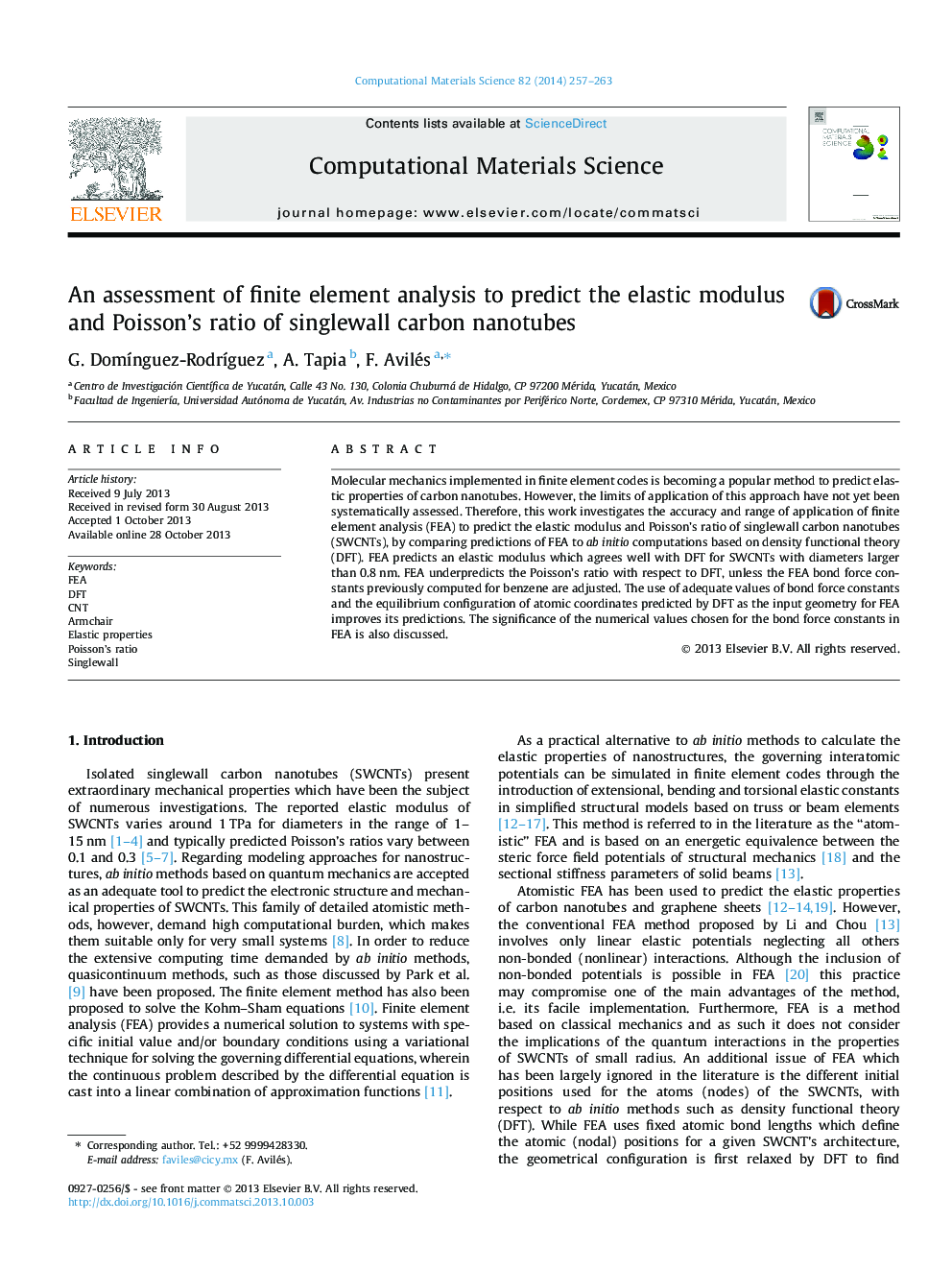| Article ID | Journal | Published Year | Pages | File Type |
|---|---|---|---|---|
| 7961082 | Computational Materials Science | 2014 | 7 Pages |
Abstract
Molecular mechanics implemented in finite element codes is becoming a popular method to predict elastic properties of carbon nanotubes. However, the limits of application of this approach have not yet been systematically assessed. Therefore, this work investigates the accuracy and range of application of finite element analysis (FEA) to predict the elastic modulus and Poisson's ratio of singlewall carbon nanotubes (SWCNTs), by comparing predictions of FEA to ab initio computations based on density functional theory (DFT). FEA predicts an elastic modulus which agrees well with DFT for SWCNTs with diameters larger than 0.8Â nm. FEA underpredicts the Poisson's ratio with respect to DFT, unless the FEA bond force constants previously computed for benzene are adjusted. The use of adequate values of bond force constants and the equilibrium configuration of atomic coordinates predicted by DFT as the input geometry for FEA improves its predictions. The significance of the numerical values chosen for the bond force constants in FEA is also discussed.
Related Topics
Physical Sciences and Engineering
Engineering
Computational Mechanics
Authors
G. DomÃnguez-RodrÃguez, A. Tapia, F. Avilés,
